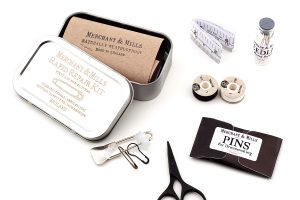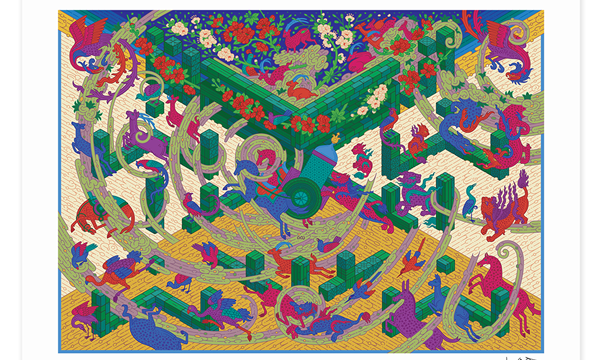Last February, Phantom Thread (2017) took home the prize for Best Costume at the 90th Academy Awards. It stars Daniel Day-Lewis as Reynolds Woodcock, the fictional doyen of a London atelier, and is inspired by post-war fashion designers including Cristobal Balenciaga, Christian Dior and Charles James.
Maybe you know these details already, but what you may not have realised is that the V&A book, London Couture: British Luxury 1923 – 1975, set the project in motion or that Daniel Day-Lewis and director Paul Thomas Anderson visited Balenciaga: Shaping Fashion as fieldwork.
However, the aspect, which really intrigued me, is that the film features two of our volunteers – seamstresses Sue Clark and Joan Brown – who doubled up as actors and technical consultants on the film. Curious, I arranged to meet the pair, who the Guardian described as Phantom Thread’s breakthrough stars.
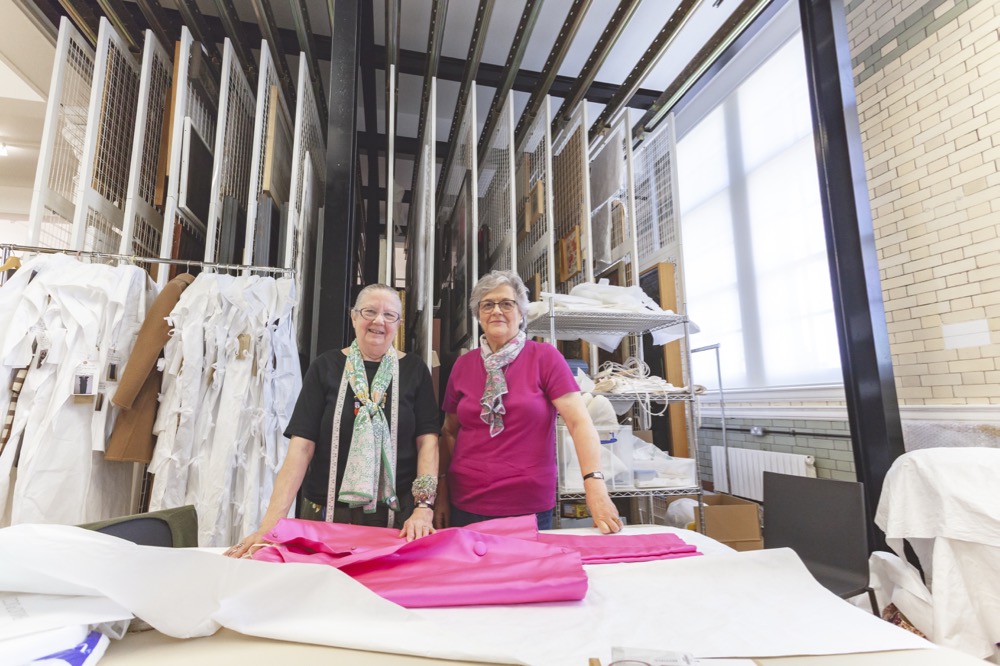
Sue and Joan are firm friends – they met in 1997 at the Museum of London’s now-defunct Friends of Fashion meeting – and joined the V&A Clothworkers’ Centre a decade ago where they’ve worked side-by-side ever since. They told me about meeting Daniel Day-Lewis (as Joan put it: “I thought I recognised him!”) and taking the set designer’s 1950s workroom to pieces.
Alongside our conversation about costumes and filming, both women kindly walked me through the items every sewing box needs whether you’re a professional or novice, and suggested books and patterns they’d recommend to a beginner like myself.

Before 2016, however, the idea that either woman would make her Hollywood debut seemed unthinkable. Joan worked at Hardy Amies in London’s West End in the 1960s, while Sue lectured in fashion and textiles. How did they get lured into acting?
“We were asked to come to Blythe House to meet some people who were making a film on 1950s fashion,” Sue explains. “Joan told them about working at Hardy Amies and the day-to-day running of a fashion house and I discussed the making of garments in the 1950s.
“The group looked at some garments chosen by curators, and it was only when we were looking at these that I looked down at one of the men’s security passes – it said Daniel Day-Lewis. I looked up into his face and thought, oh, it is. Later, I said, “Joan, do you know who what was?” And she said: “I thought I recognised him!””

Afterwards, both women debriefed at a nearby café before calling their families who were understandably stunned. For several weeks, Joan and Sue exchanged emails with cast and even met with Lesley Manville to discuss her part as Reynold’s sister (interestingly, Phantom Thread‘s brother-sister dynamic mirrors that of Hardy Amies where Sir Hardy’s sister Rosemary managed the business). Eventually, Joan and Sue were asked if they would like to appear in the film.
“We discussed it and thought we would just be doing a little bit of sewing in the background,” Sue tells me, “but of course it was much more than that.”
These seamstresses brought specialist knowledge to the film, from the correct way to fit a garment on a client, to the set up of a mid-century workroom. “Not only did we play two fitters but we also made sure that everything was real and authentic,” explains Joan. “In fact, we took the workrooms to pieces.”
Sue adds: “They set up these workrooms and we just looked around in horror. They didn’t give each seamstress her own workbox, instead they had communal boxes, and there was thread and buttons everywhere. In a real workroom, girls worked shoulder-to-shoulder and never shared equipment. Joan and I just looked around us and said “Never!””
These small details, coupled with authentic equipment like Singer sewing machines and a non-electric presser, gave Phantom Thread its authentic flair.
But back to the present day…
The tools of the trade
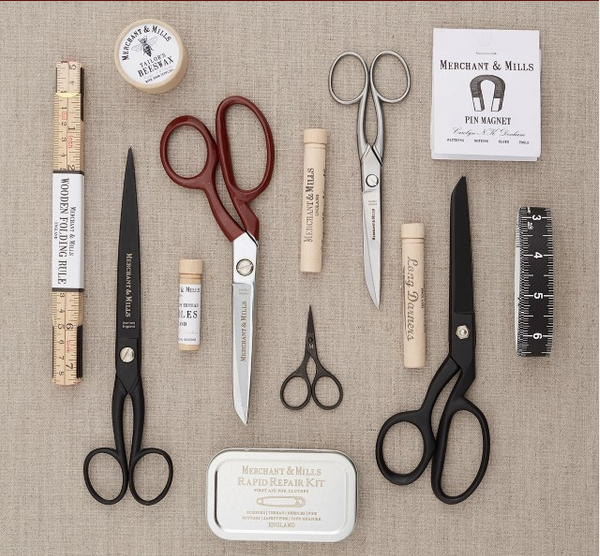
If you fancy yourself a Savile Row tailor (or just want to indulge your crafty side), what are the bits and pieces you should invest in?
Sue and Joan suggested Elementary Sewing Skills as a starting point, not only on account of its excellent content but because it’s easy to carry around and can be stored away in your sewing box. As for patterns, something forgiving like this Trapeze dress will help beginners with those initial hurdles due to its loose fit, optional sleeves and lack of buttons.
When it comes to filling your sewing box, a seam ripper is indispensable, especially for beginners, alongside a small scissors and tailor’s shears (although all-purpose scissors will suffice). Both ladies stressed that scissors should be kept sharp and never used to cut paper…
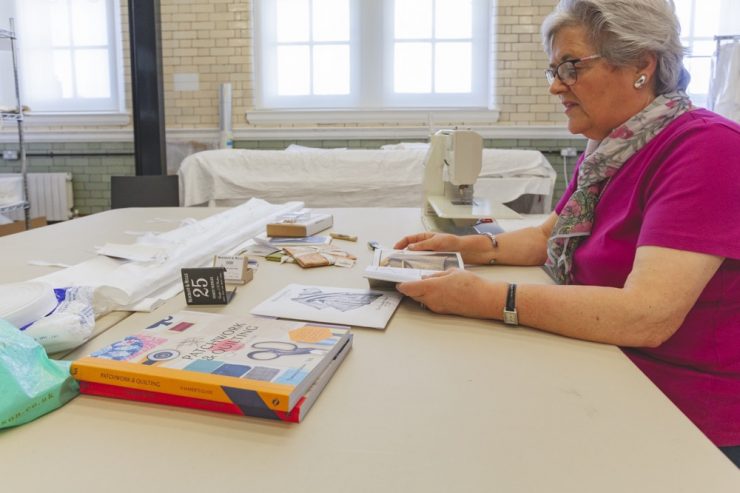
Once you’re ready to cut and unpick, it goes without saying that needles are key. Opt for a pack of long and short needles, the former for darning and the latter for hand sewing, alongside glass headed pins, which are easily spotted in the material.
Faced with the question of thimbles, Joan told me that she found a tailor’s thimble easier to use, and unlike a dressmaker’s thimble, it was versatile enough to tackle all fabrics, from lighter materials to thick tweeds. “The difference between these two thimbles lies in the hole at the top of the tailor’s thimble. Whereas the dressmaker pushes from the finger, the tailor pushes from the side rather than the bottom, which requires more power in the arm.”
Sue also added that thread should always be new, and told me to avoid using old fabric lying around the house as well as thread on wooden spools.
The last item you’ll need set you off on your journey is a tape measure but… these seamstresses made it abundantly clear that I could not buy my own tape measure.
“You never buy your own tape measure, you always ask someone to buy it for you,” Joan tells me. “I’ve been in the trade over 50 years and when I first went into the workrooms in the fashion houses in the West End I was told that; it’s something I’ve carried with me.”

A word of advice from the experts
What should you do if you have your needles, thread, pins, tape measure, ripper and scissors ready to go, but feel daunted at the idea of making a dress?
These experts suggest starting with patchwork. “Patchwork is just straight lines of sewing so it’s easier to make a pin cushion or tea cosy. Just use good, firm cotton, which will make it easier to sew a nice seam.”
And who knows, maybe one day your pincushion – like Joan’s – will make a Hollywood appearance of its own.
Shop haberdashery online
Stock up your sewing box with our haberdashery essentials.
Shop online ▸
